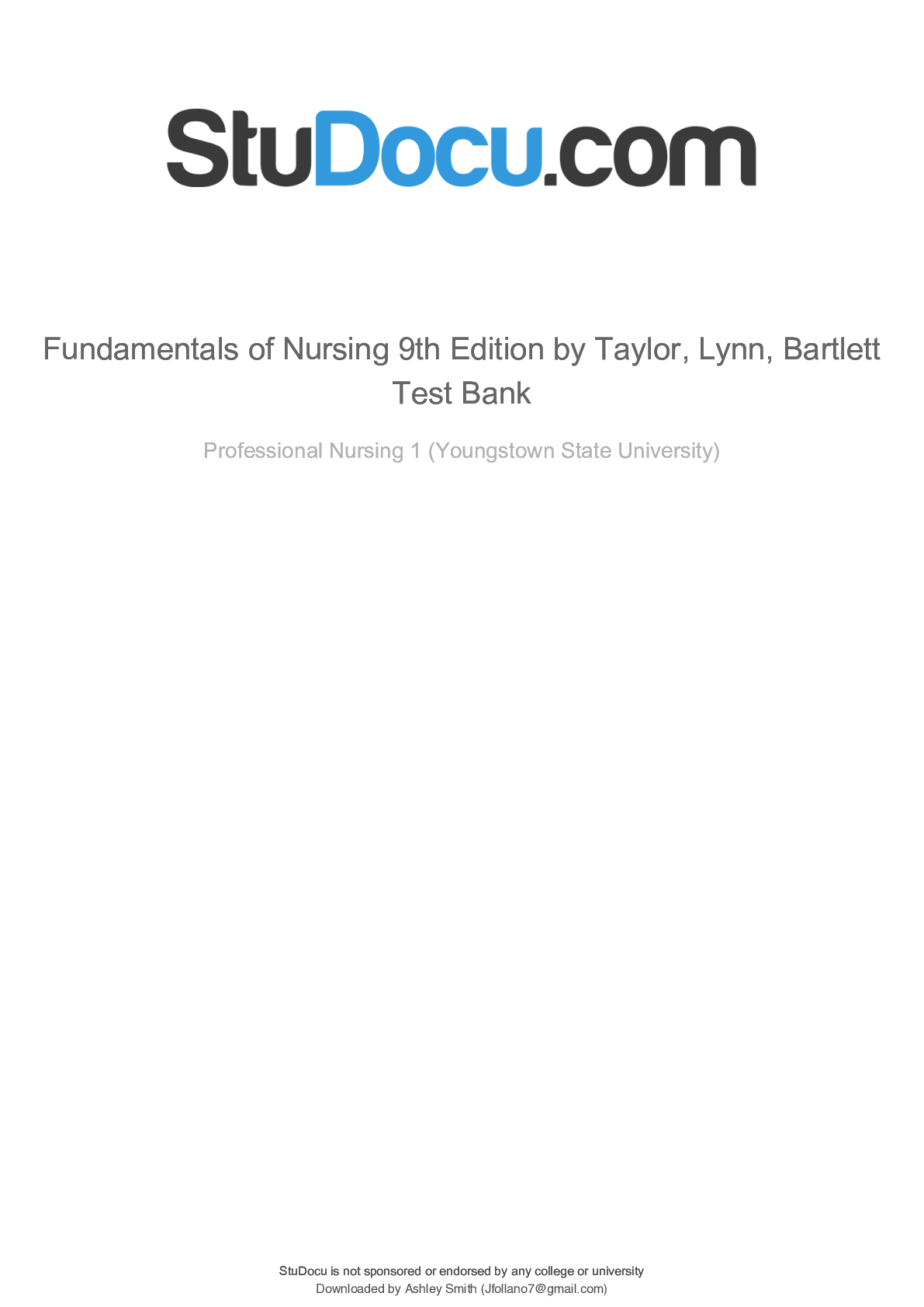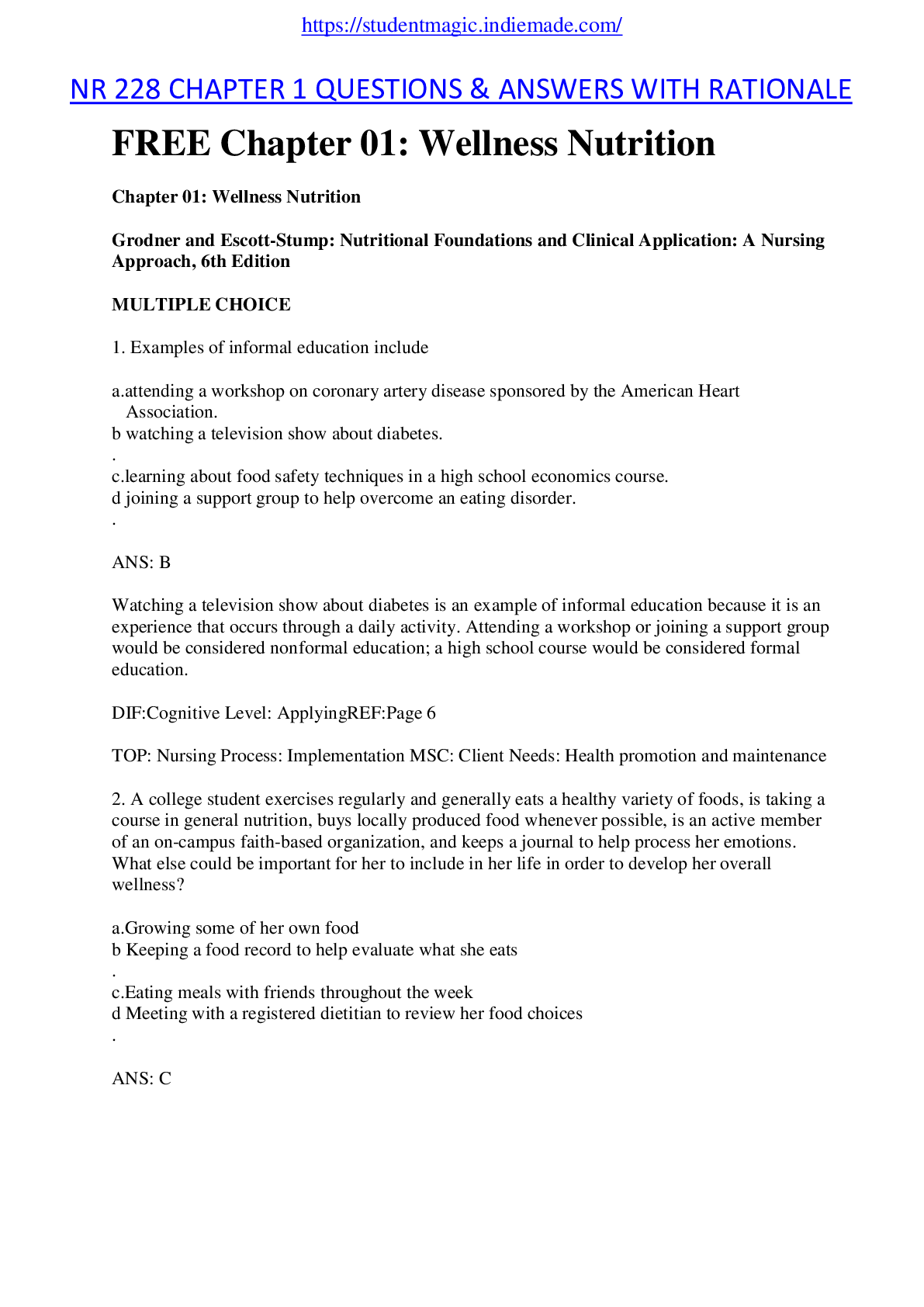*NURSING > EXAM > Health: Patient Protection Exam Questions & Answers With Rationales, Explained Answers (All)
Health: Patient Protection Exam Questions & Answers With Rationales, Explained Answers
Document Content and Description Below
Health: Patient Protection Exam Questions & Answers With Rationales, Explained Answers-A hospitalized patient who has received chemotherapy for leukemia develops neutropenia. Which observation by the ... nurse indicates a need for further teaching? A. The patient requests a vegetarian diet. B. The patient ambulates around the hospital. C. The patient cleans with a warm washcloth after having a stool. D. The patient uses soap and shampoo to shower every other day. - B Rationale: The patient should ambulate in the room rather than the hospital hallway to avoid exposure to other patients or visitors. A vegetarian diet does not add to infection risk if the food items are peeled and/or cooked. Because overuse of soap can dry the skin and increase infection risk, showering every other day is acceptable. Careful cleaning after having a bowel movement will help prevent skin breakdown and infection. A patient develops neutropenia after receiving chemotherapy. Which information about ways to prevent infection will the nurse include in the teaching plan? (Select all that apply.) A. Cook food thoroughly before eating. B. Choose low fiber, low residue foods. C. Avoid public transportation such as buses. D. Use rectal suppositories if needed for constipation. E. Talk to the oncologist before having any dental work. - A, C, E Rationale: Eating only cooked food and avoiding public transportation will decrease infection risk. A high-fiber diet is recommended for neutropenic patients to decrease constipation. Because bacteria may enter the circulation during dental work or oral surgery, the patient may need to postpone dental work or take antibiotics. A patient has inadequate nutrition due to painful oral ulcers. Which nursing action will be most effective in improving oral intake? A. Offer the patient frequent small snacks between meals. B. Assist the patient to choose favorite foods from the menu. C. Apply prescribed anesthetic gel to oral lesions before meals. D. Teach the patient about the importance of nutritional intake. - C Rationale: Because the cause of the patient's poor nutrition is the painful oral ulcers, the best intervention is to apply anesthetic gel to the lesions before the patient eats. The other actions might be helpful for other patients with impaired nutrition but would not be as helpful for this patient. A patient smokes 2 packs of cigarettes/day. Which action by the nurse could help the patient reduce the risk of lung cancer? A. Teach the patient about the seven warning signs of cancer. B. Plan to monitor the patient's carcinoembryonic antigen (CEA) level. C. Teach the patient about annual chest x-rays for lung cancer screening. D. Discuss dangers associated with cigarettes during each patient encounter. - D Rationale: Teaching about the risks associated with cigarette smoking is recommended at every patient encounter because cigarette smoking is associated with multiple health problems. The other options may detect lung cancer that is already present but do not reduce the risk. A patient who is being treated for stage IV lung cancer tells the nurse about intense new-onset back pain. Which action would the nurse take first? A. Give the patient the prescribed PRN opioid. B. Assess for sensation and strength in the legs. C. Notify the health care provider about the symptoms. D. Teach the patient how to use relaxation to reduce pain. - B Rationale: Spinal cord compression, an oncologic emergency, can occur with invasion of tumor into the epidural space. The nurse will need to assess the patient further for symptoms such as decreased leg sensation and strength and then notify the health care provider. Administration of opioids or the use of relaxation may be appropriate but only after the nurse has assessed for possible spinal cord compression. A patient who is diagnosed with cervical cancer classified as Tis, N0, M0 asks the nurse what the letters and numbers mean. Which response by the nurse is accurate? A. "The cancer involves only the cervix." B. "The cancer cells look like normal cells." C. "Further testing is needed to determine the spread of the cancer." D. "It is difficult to determine the original site of the cervical cancer." - A Rationale: Cancer in situ indicates that the cancer is localized to the cervix and is not invasive at this time. Cell differentiation is not indicated by clinical staging. Because the cancer is in situ, the origin is the cervix. Further testing is not indicated given that the cancer has not spread. [Show More]
Last updated: 1 year ago
Preview 3 out of 10 pages

Loading document previews ...
Buy this document to get the full access instantly
Instant Download Access after purchase
Buy NowInstant download
We Accept:

Reviews( 0 )
$9.50
Can't find what you want? Try our AI powered Search
Document information
Connected school, study & course
About the document
Uploaded On
Jul 30, 2024
Number of pages
10
Written in
Additional information
This document has been written for:
Uploaded
Jul 30, 2024
Downloads
0
Views
31

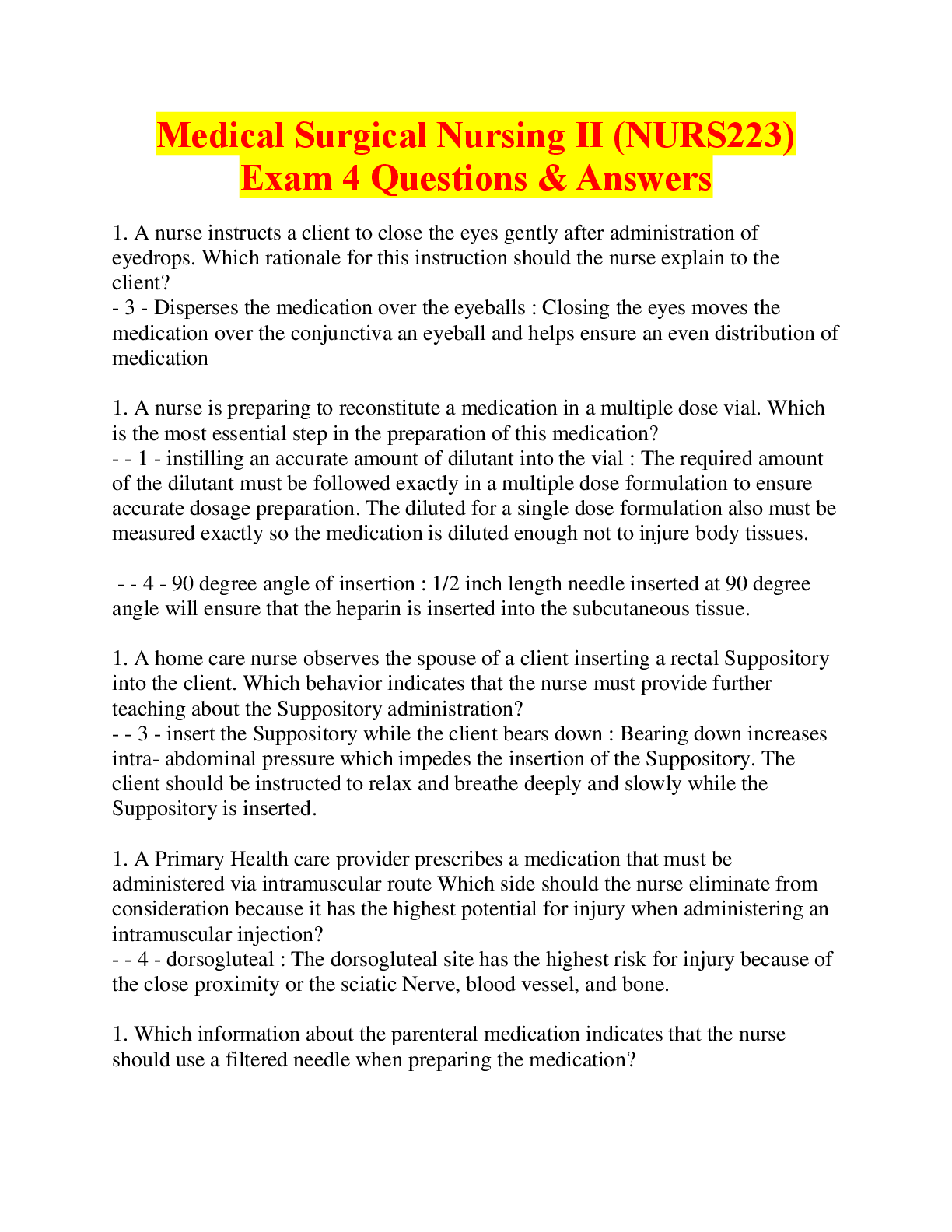
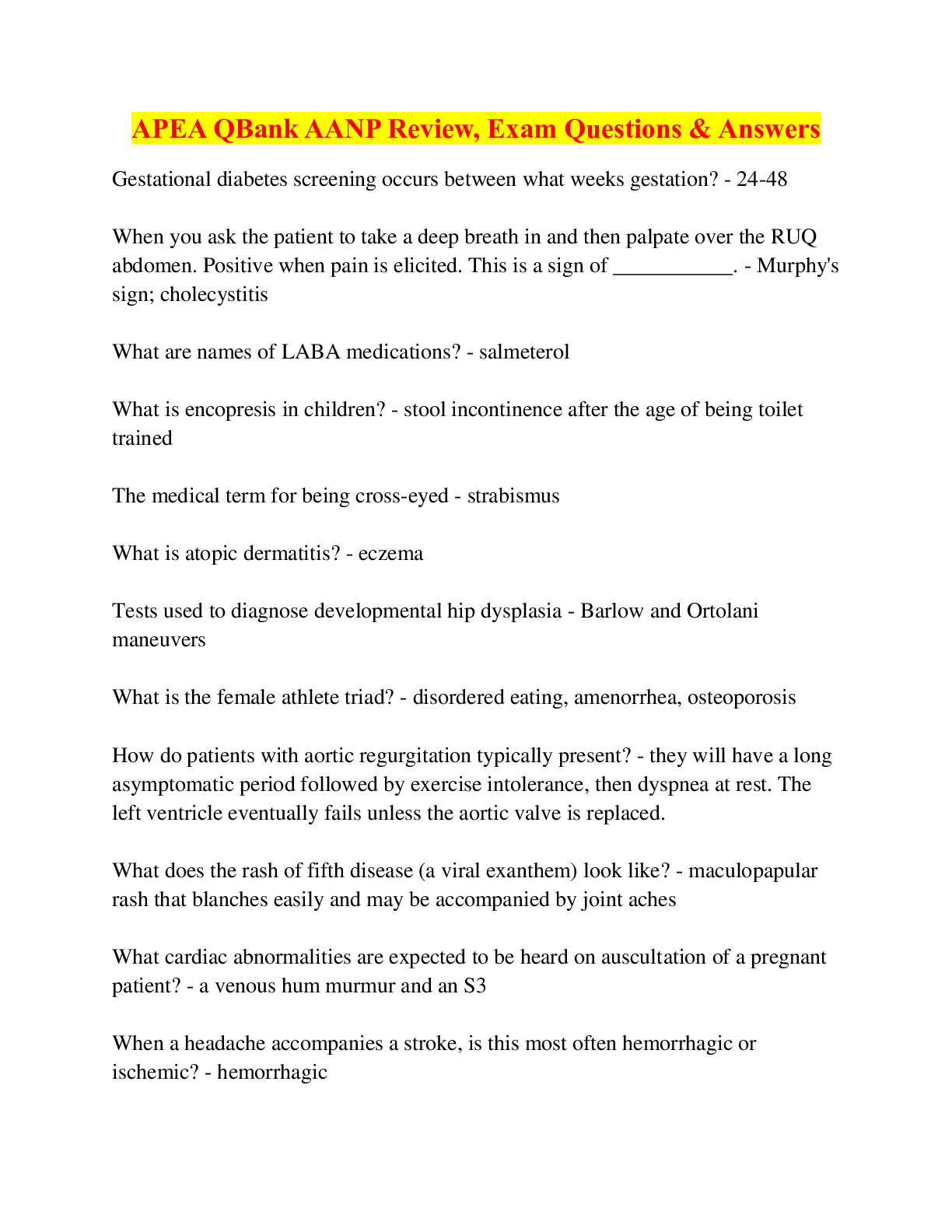
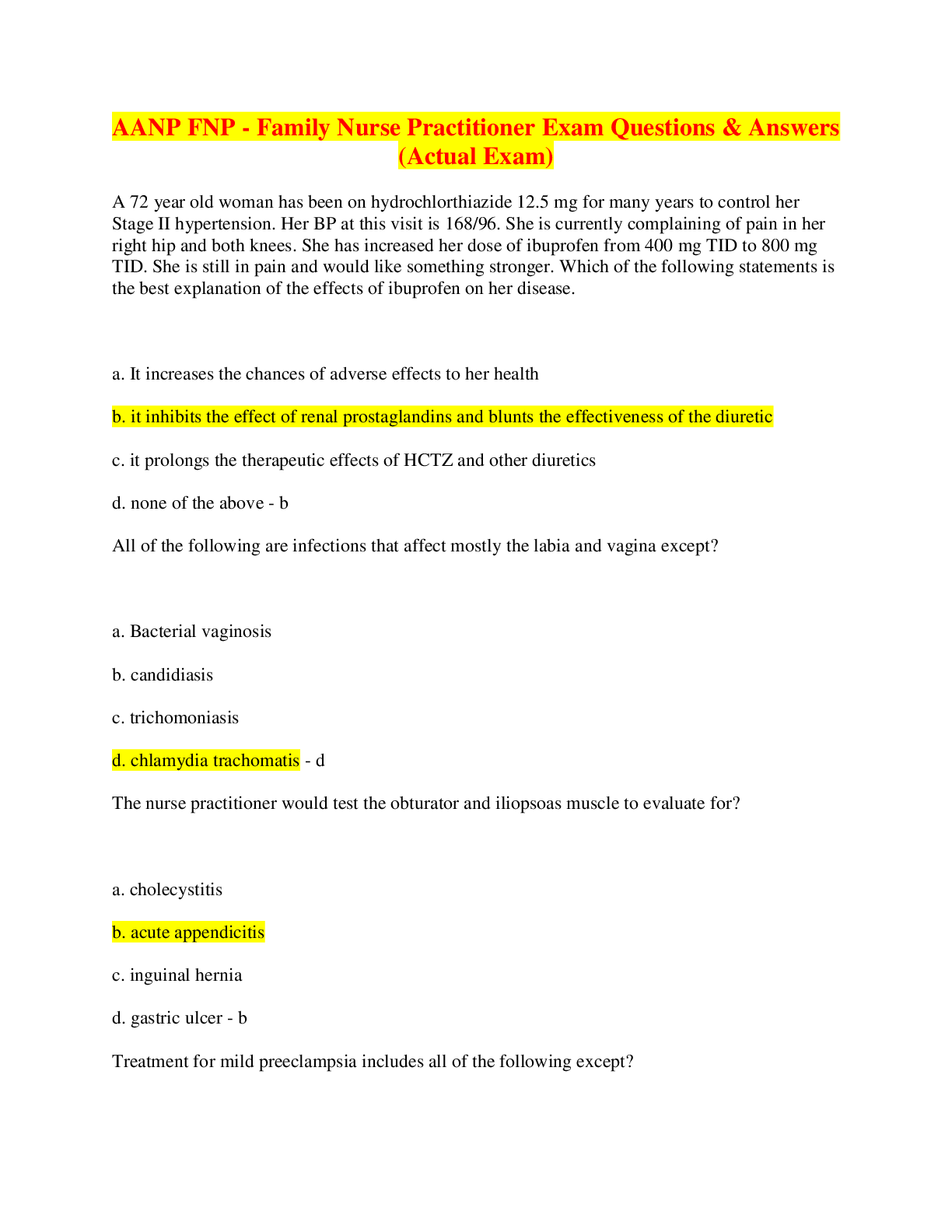
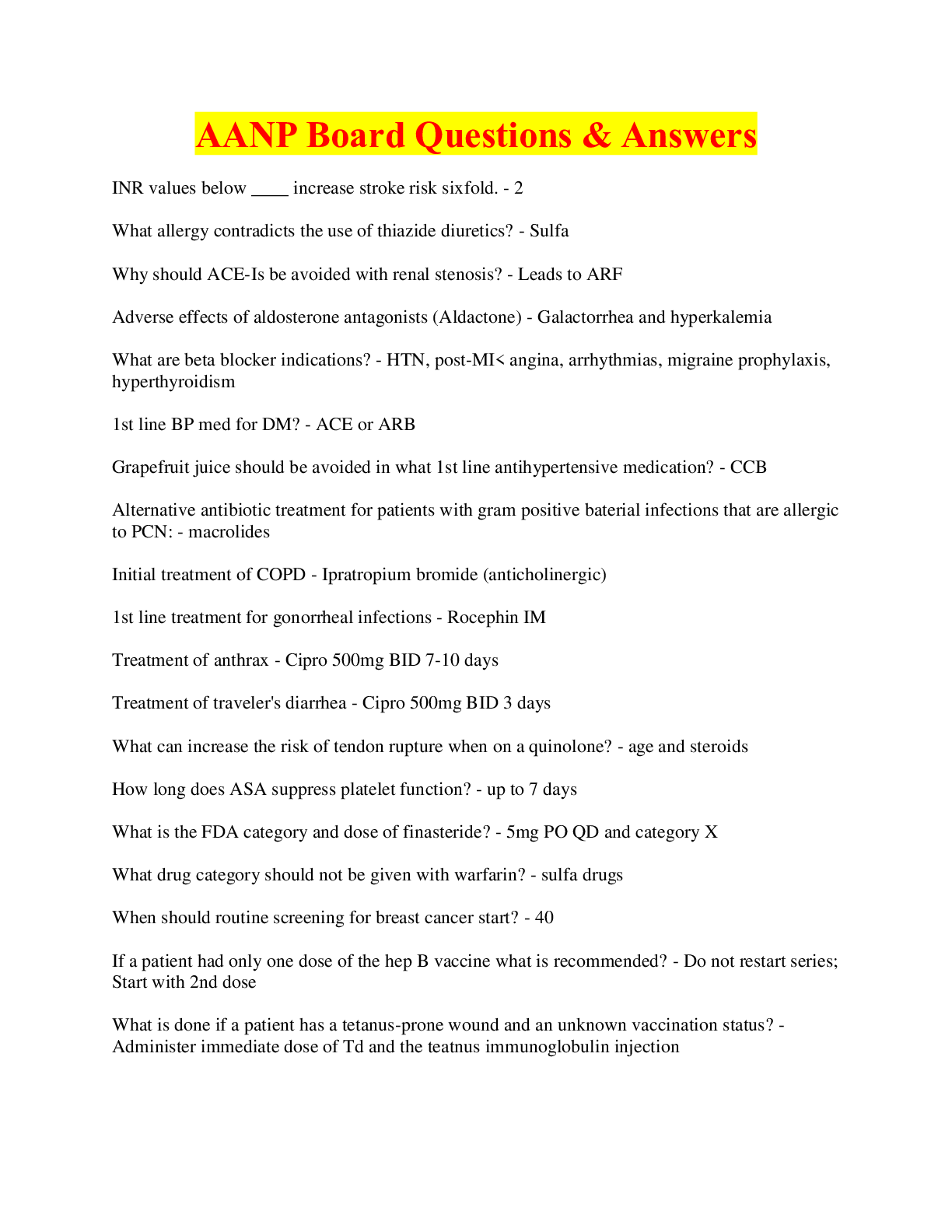
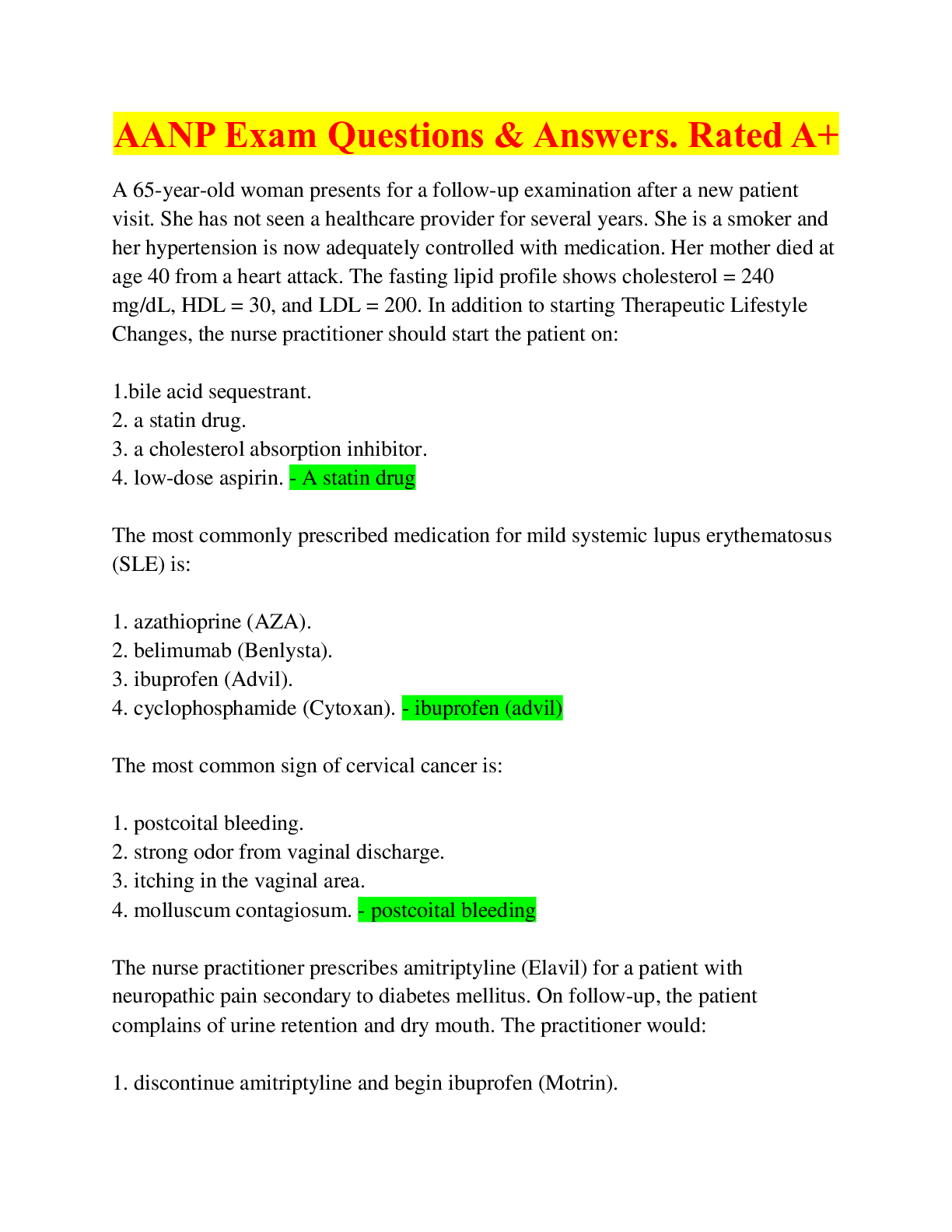
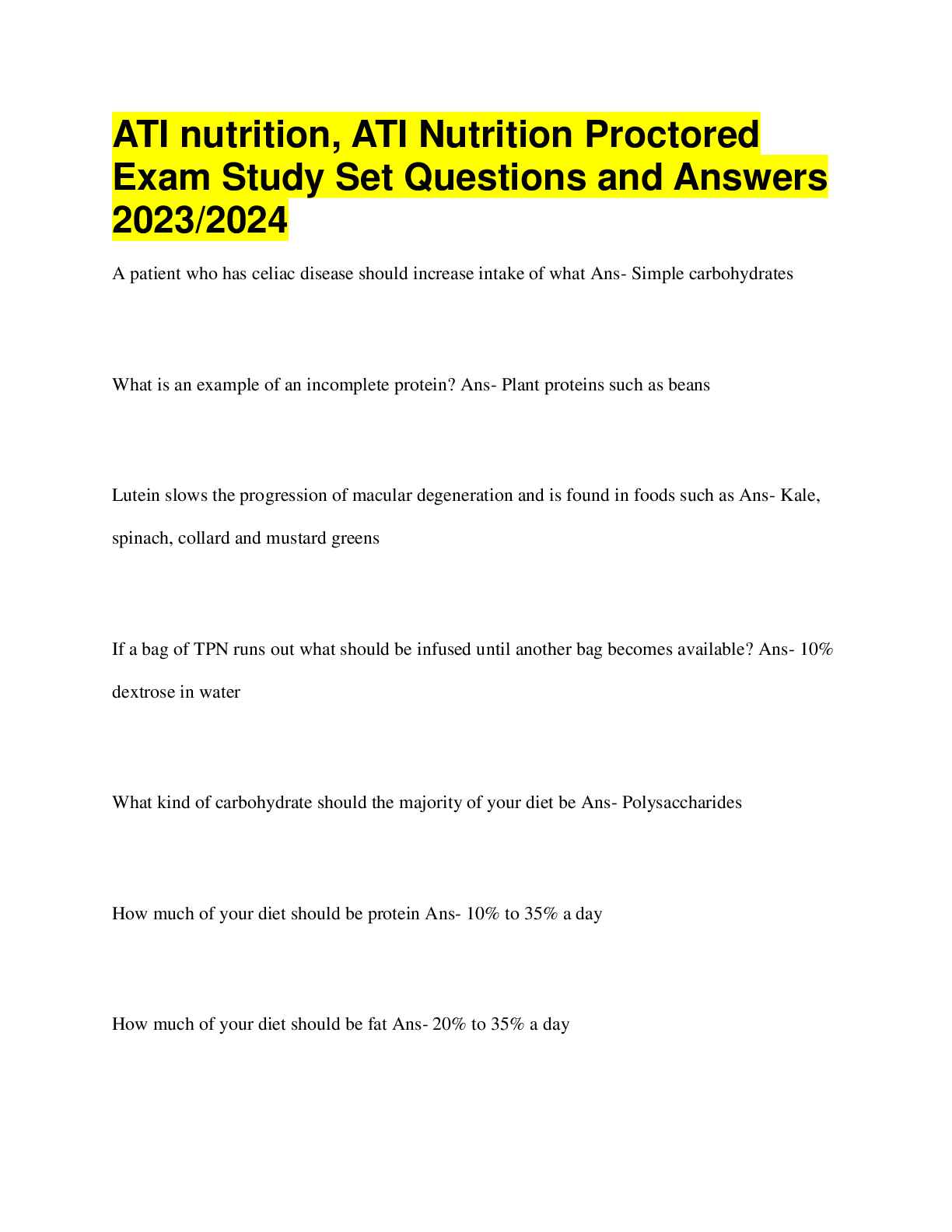
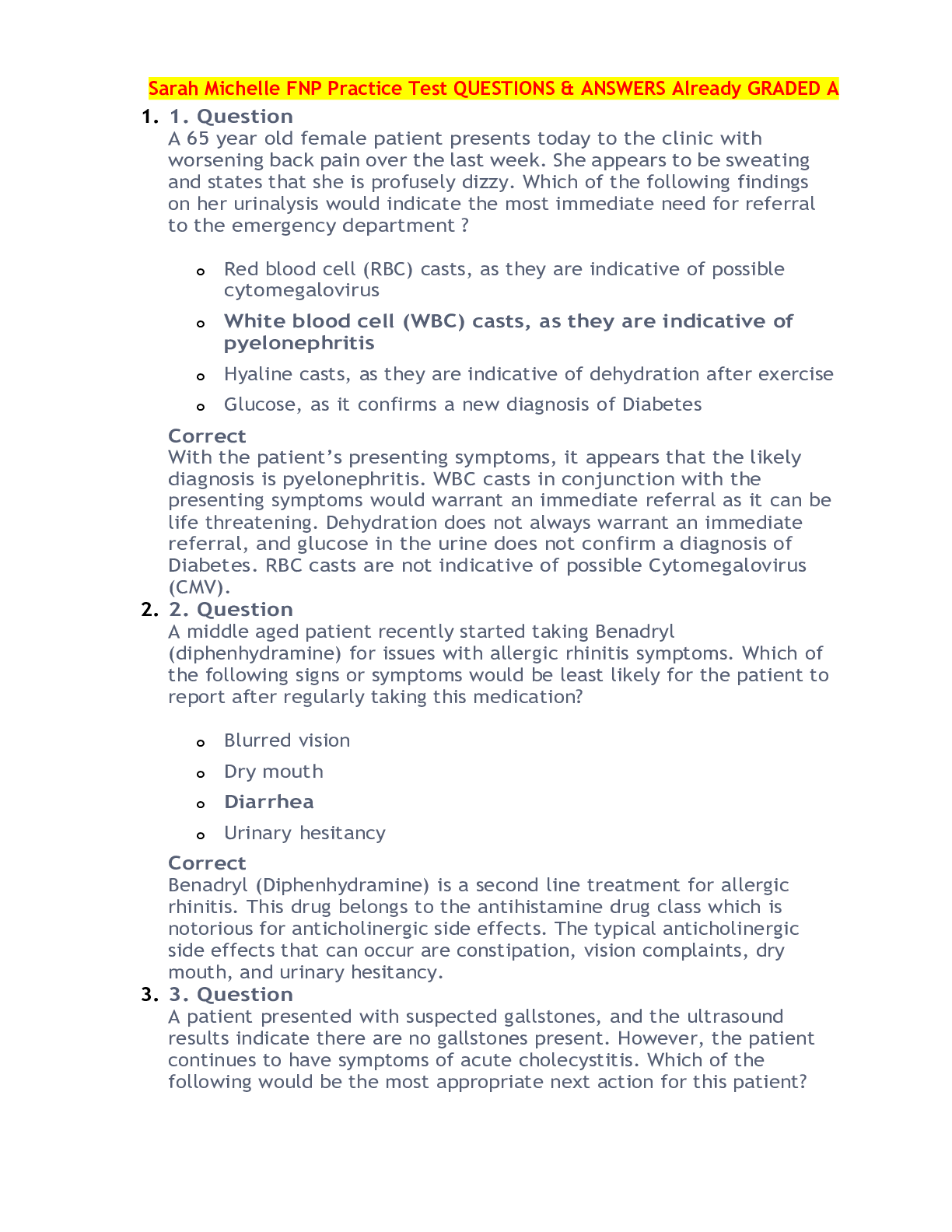
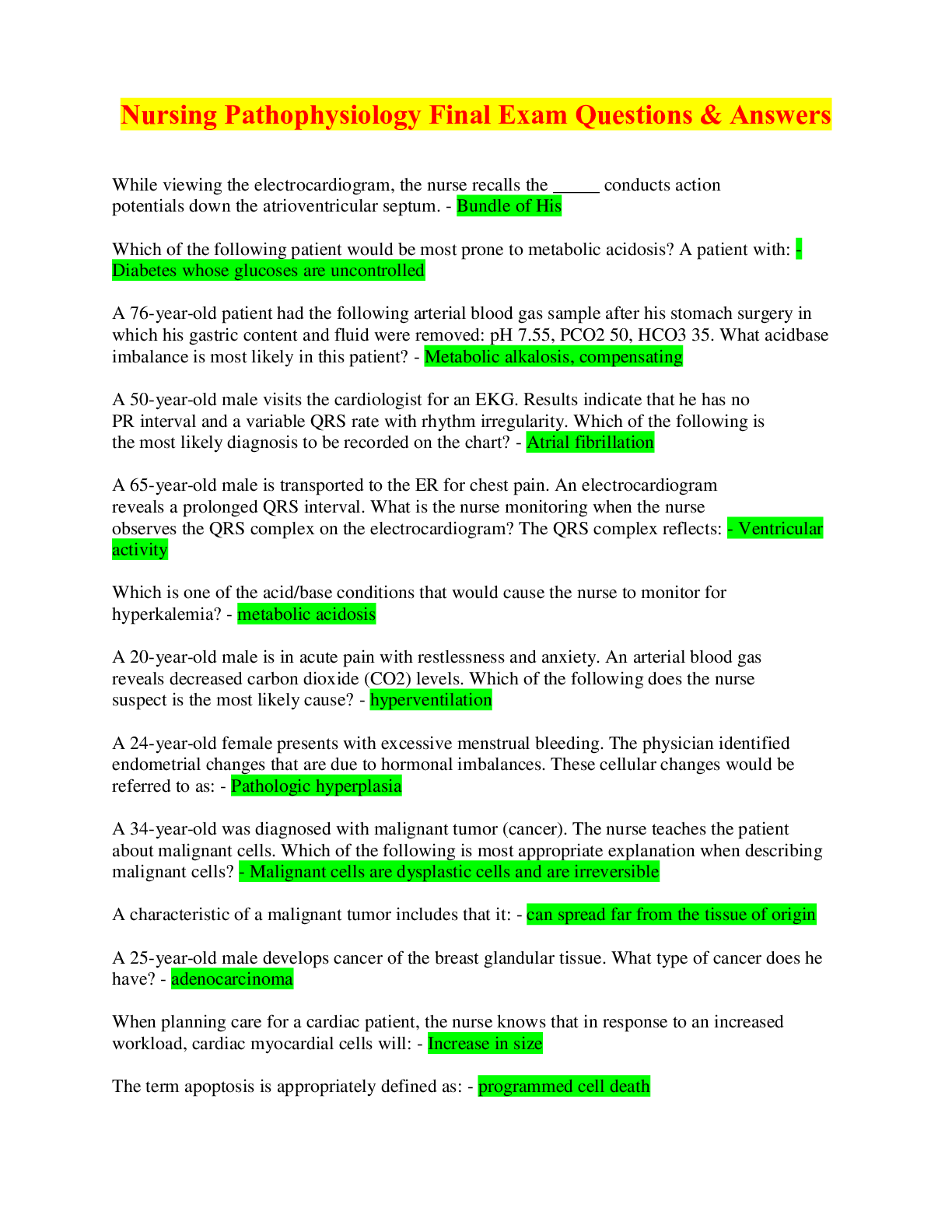
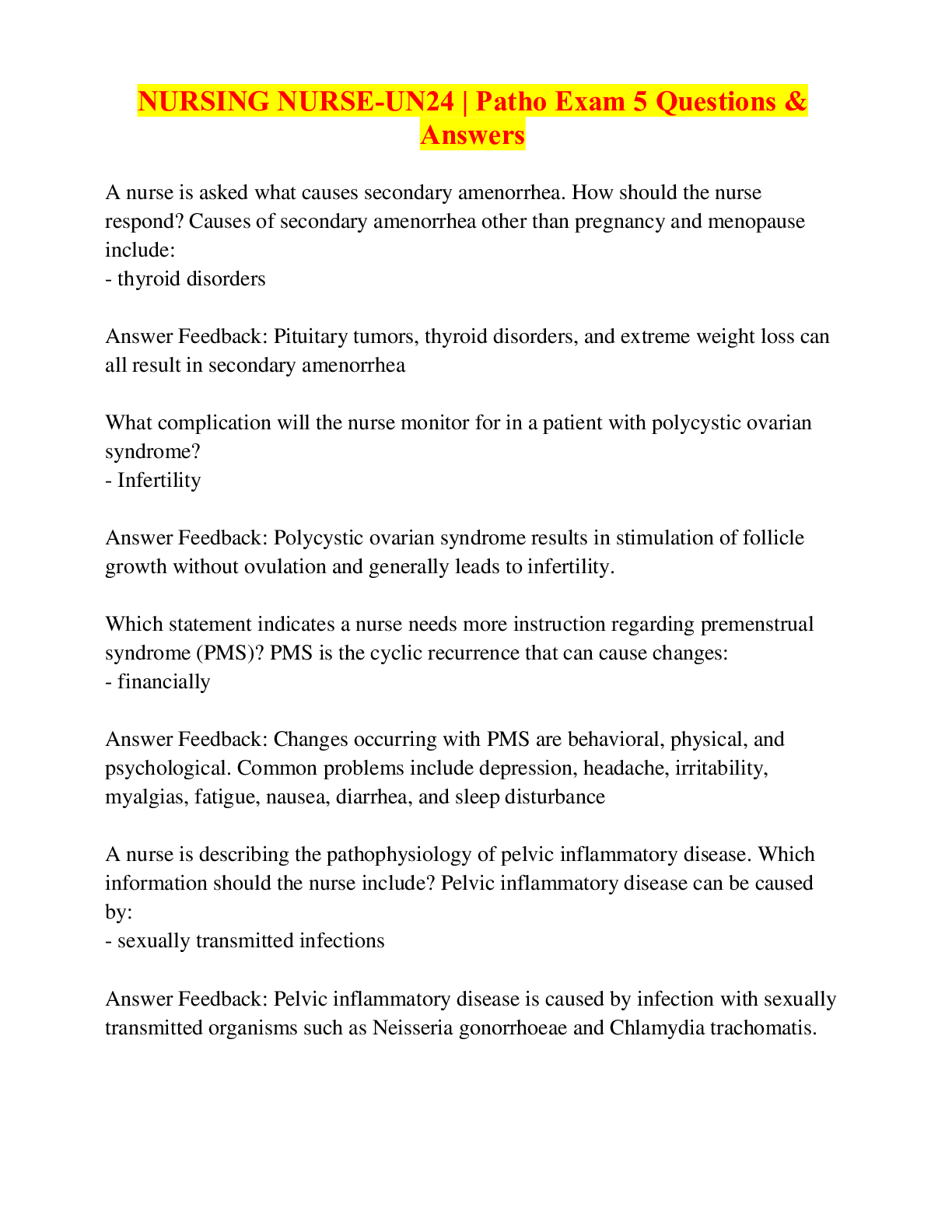

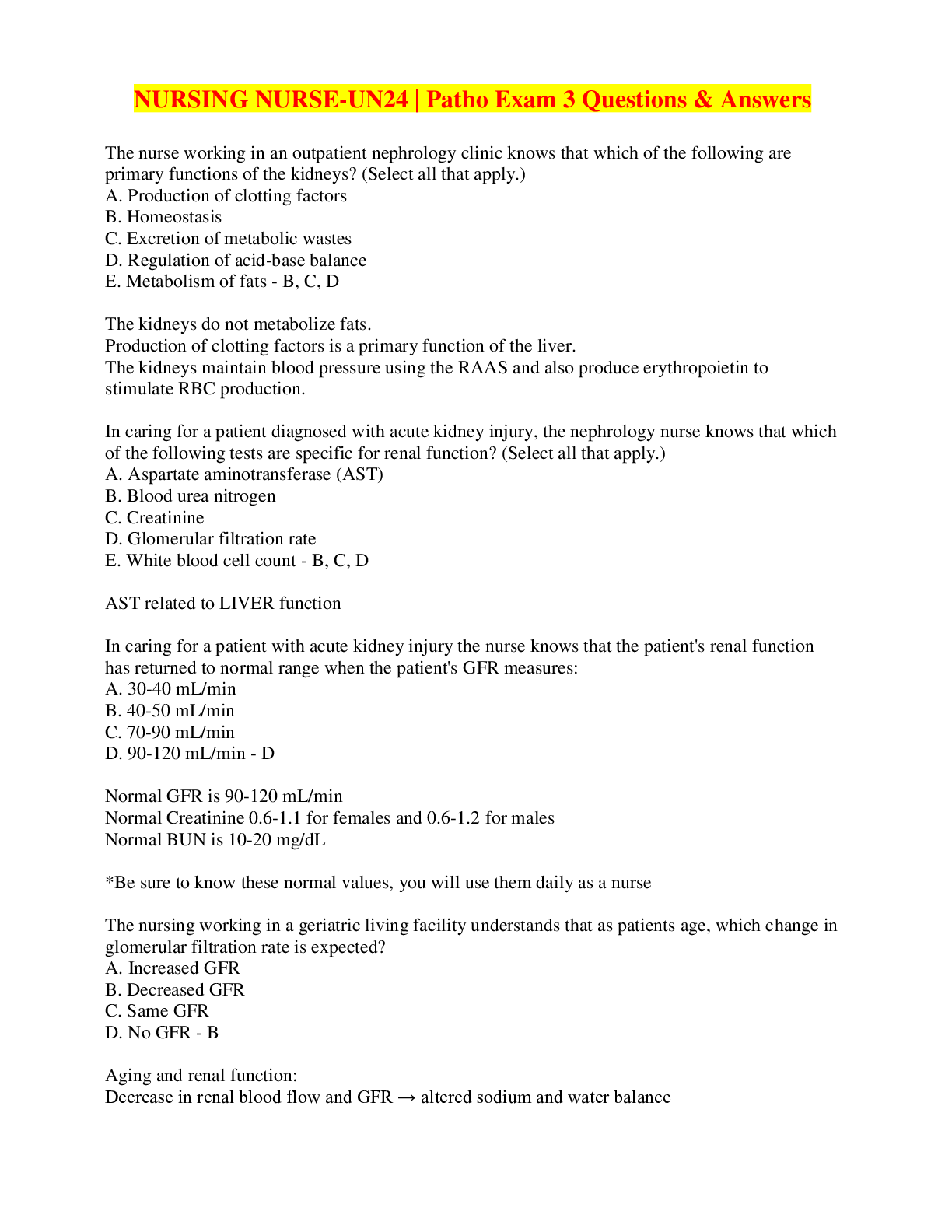
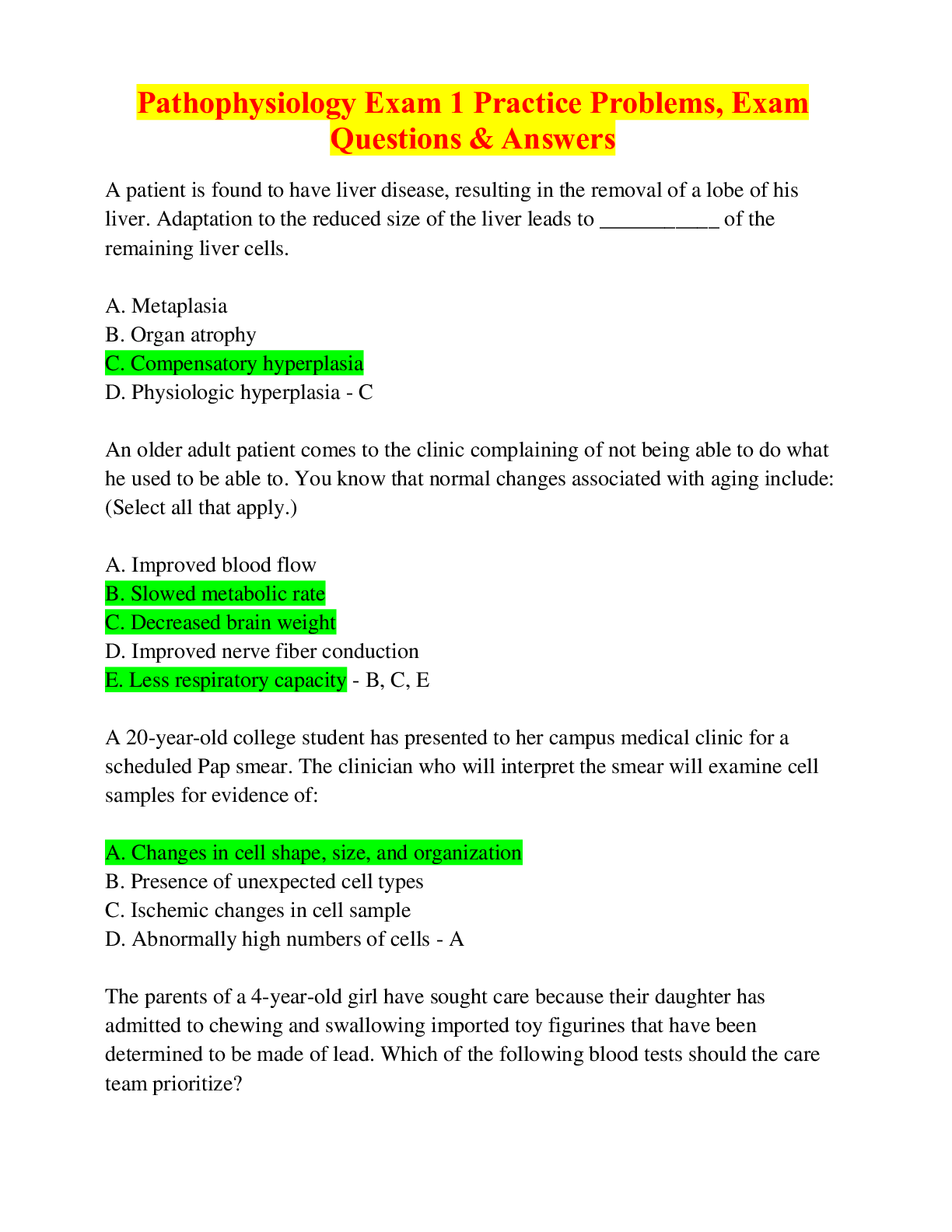
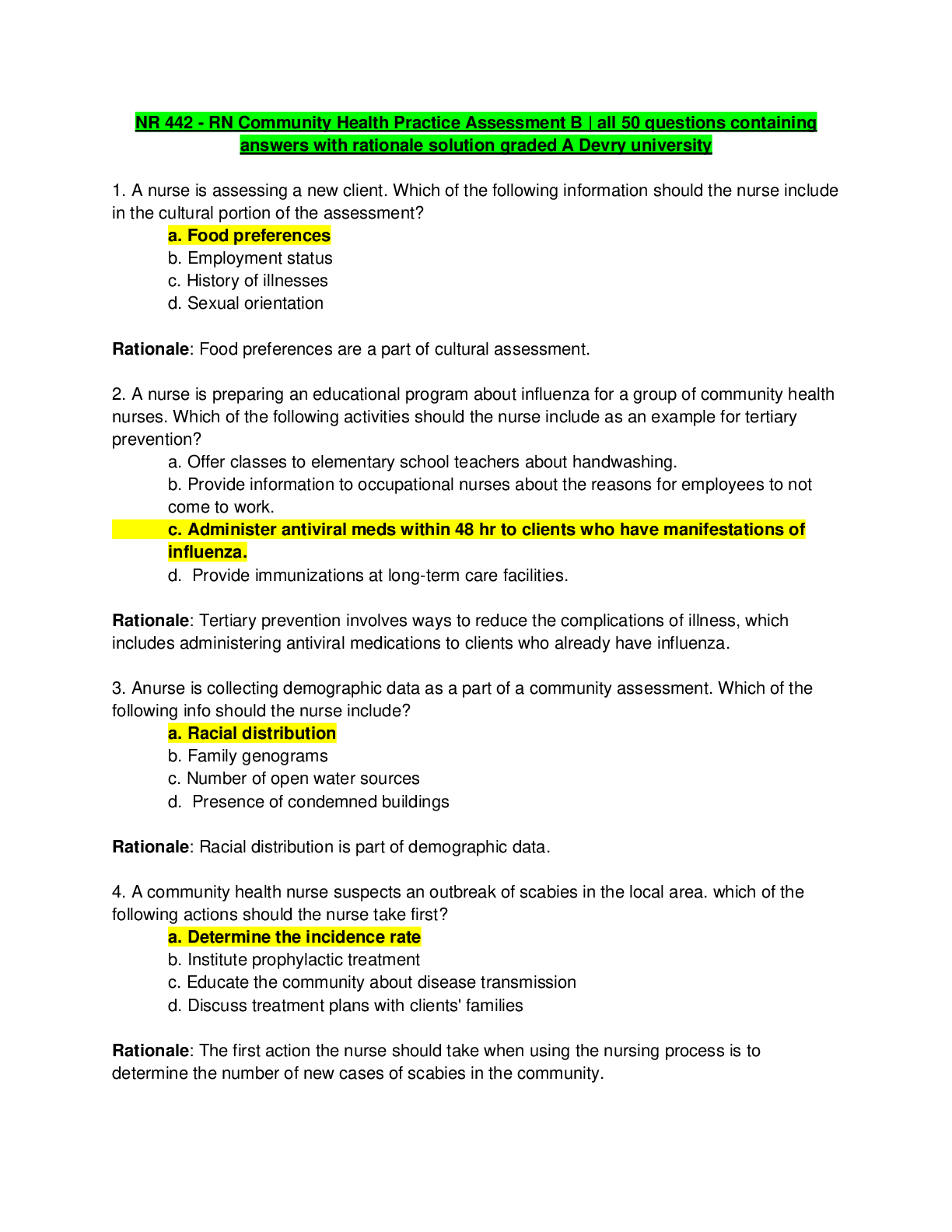


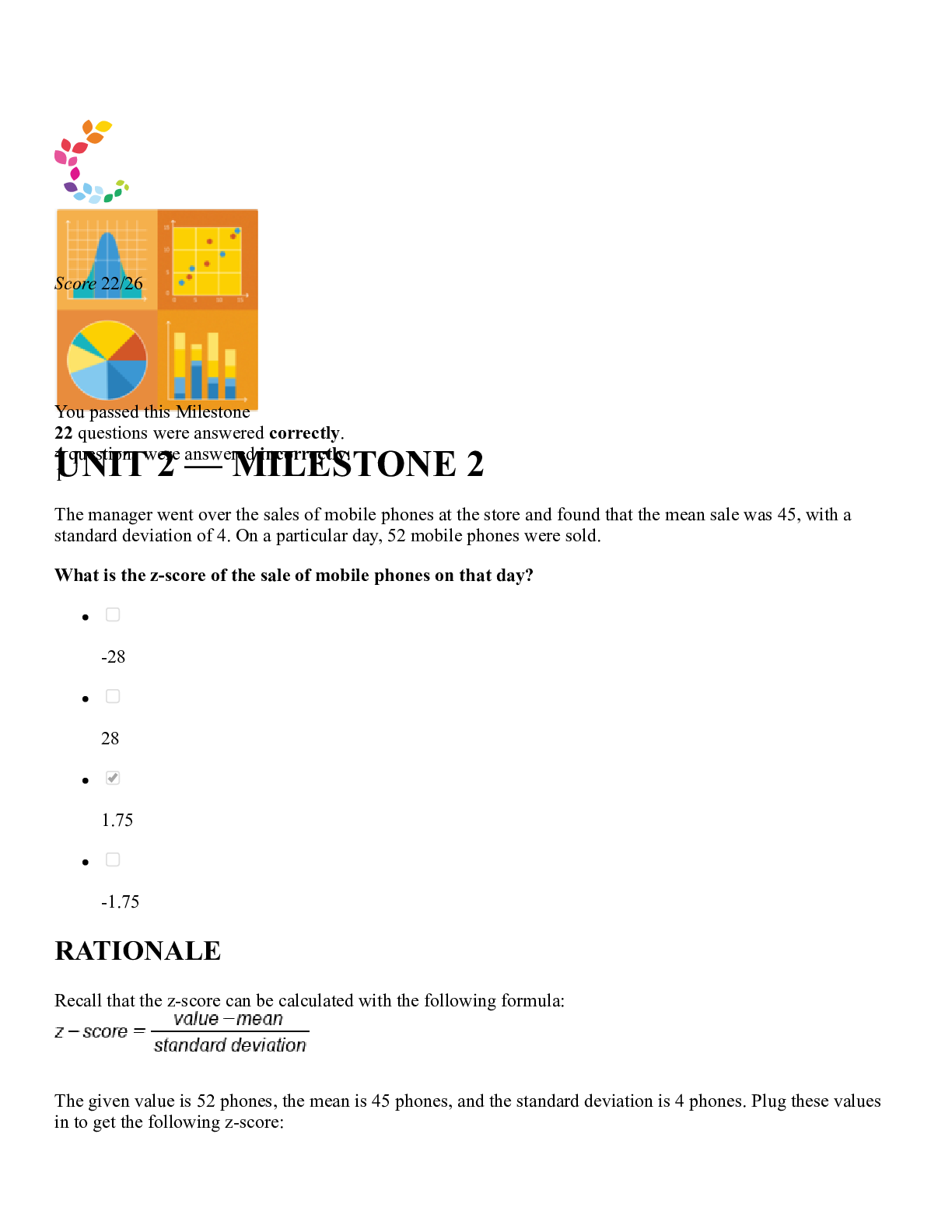


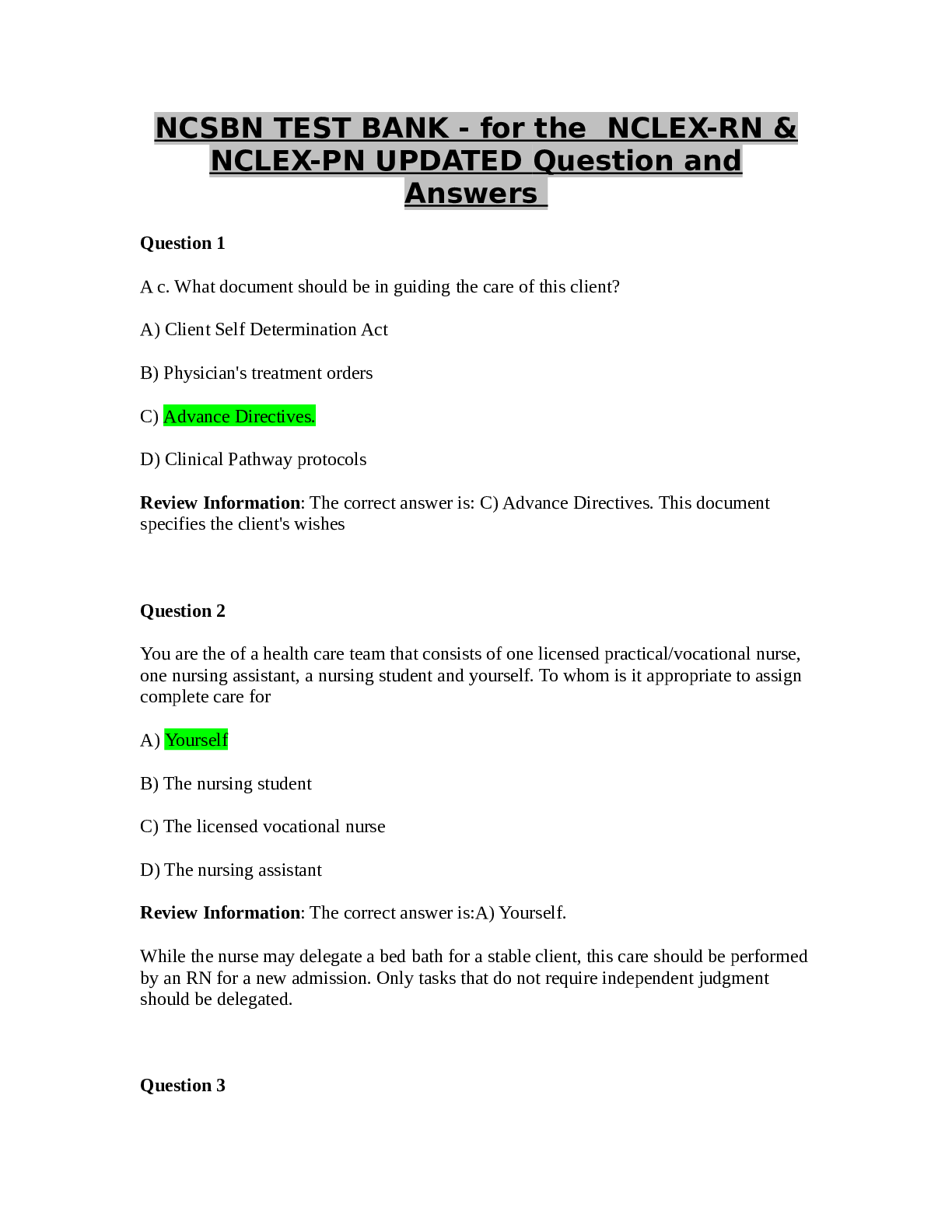
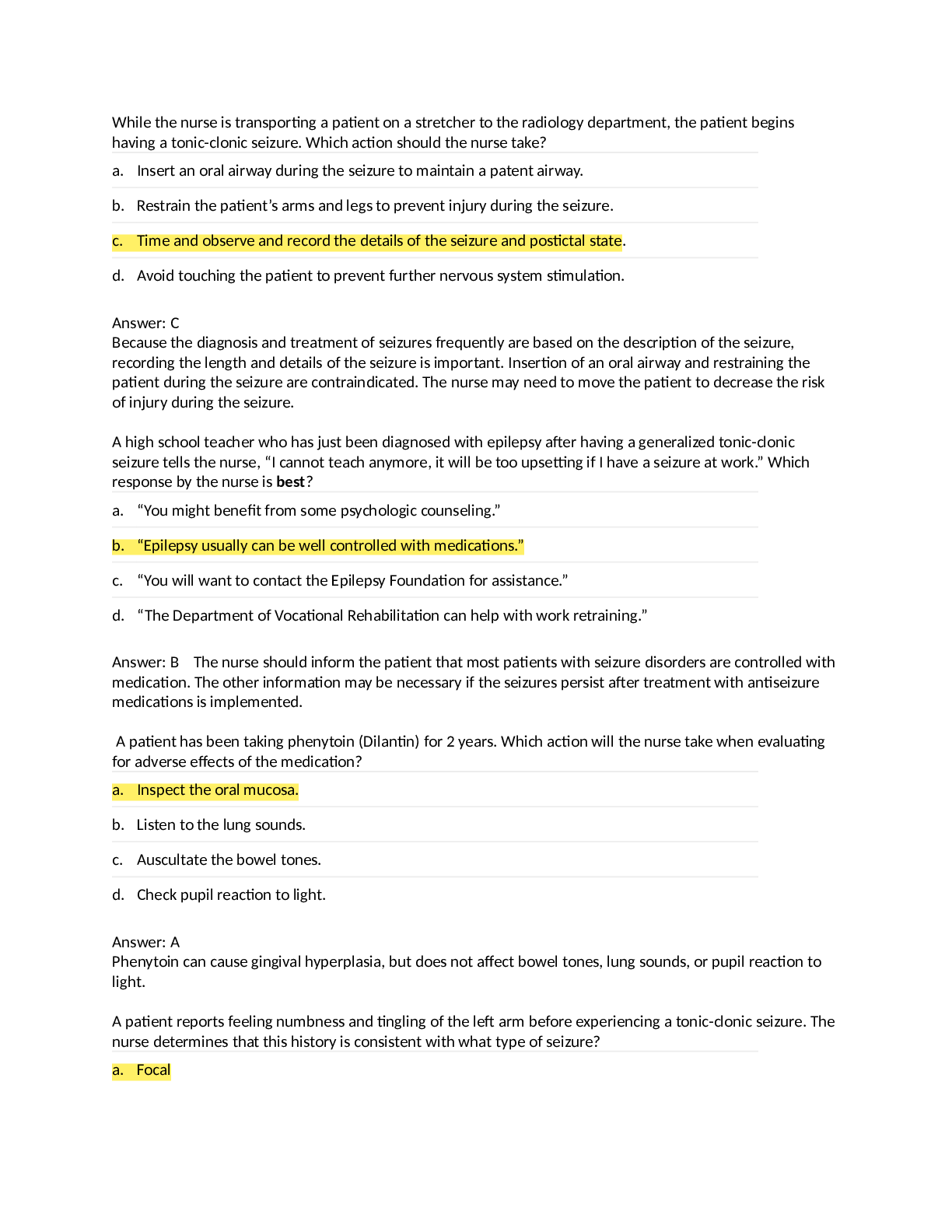
.png)
